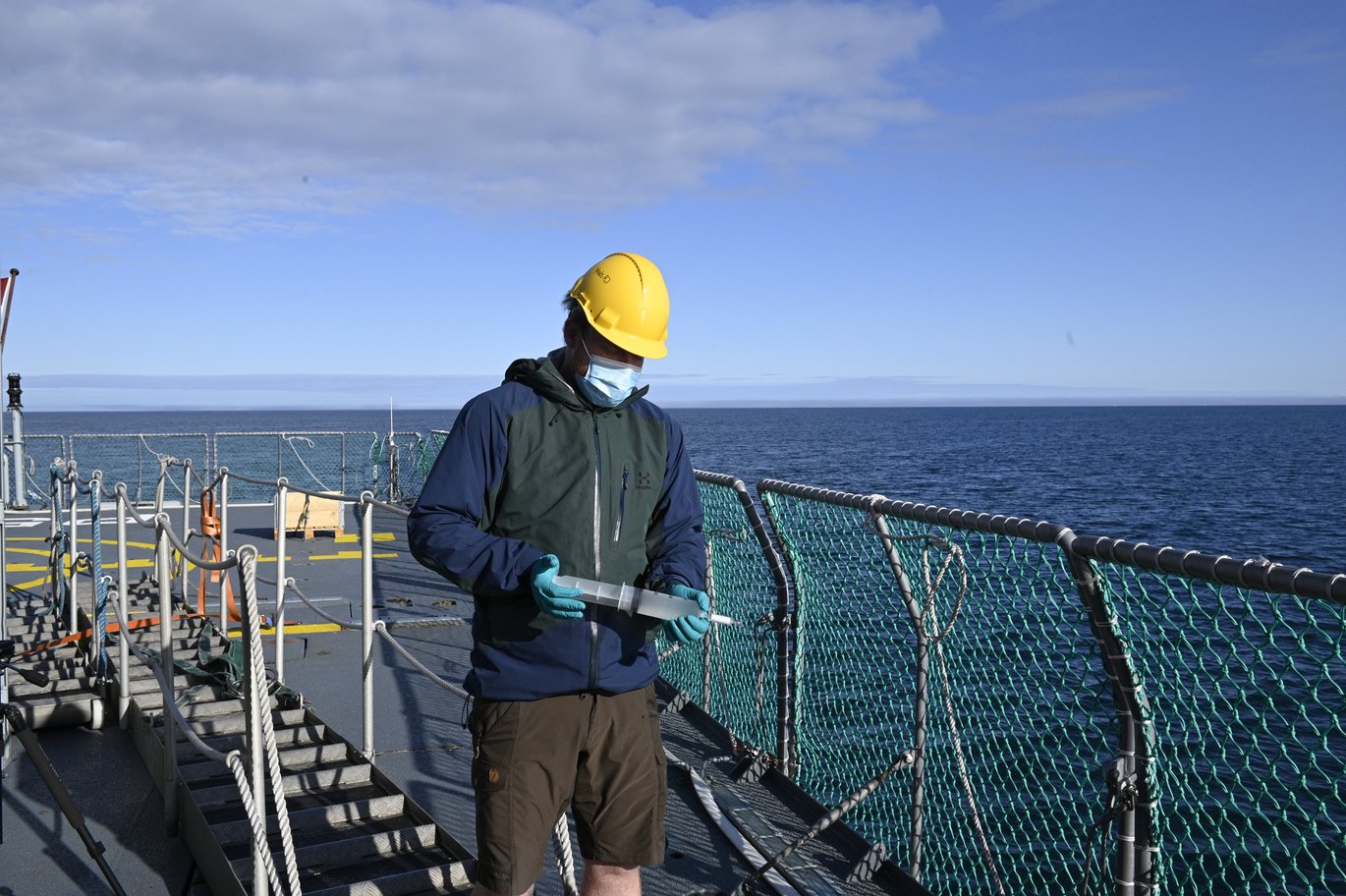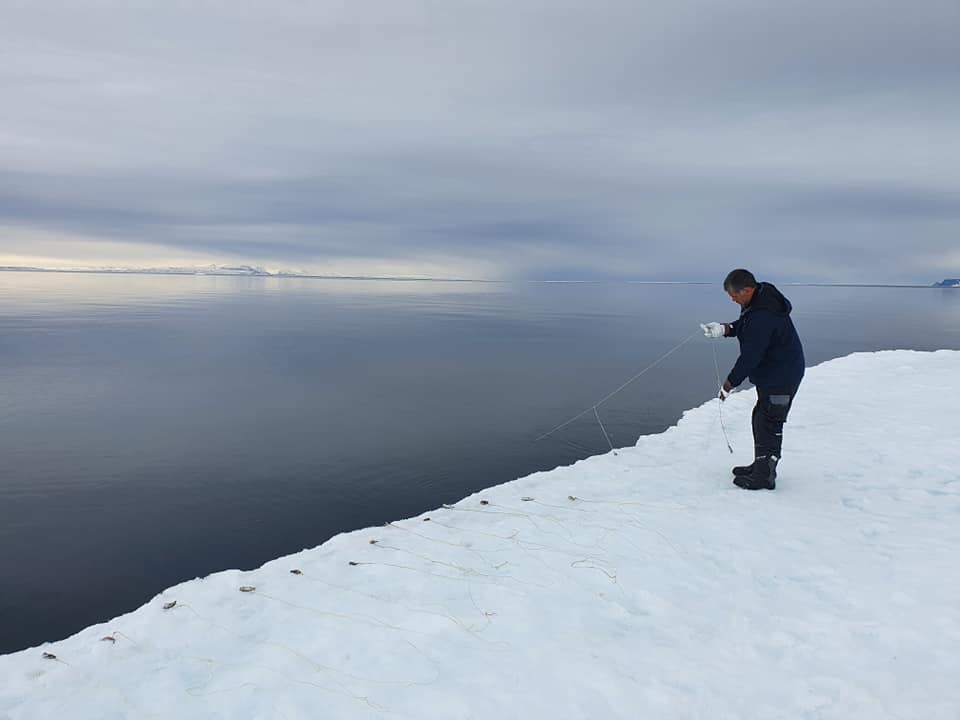Water samples describe life beneath the sea surface along Greenland’s coasts
Modern DNA technology now allows simple monitoring of the distribution of different fish species in remote Arctic areas. This is shown in a new research study just published in the journal “Diversity and Distribution”. The results open up major new perspectives for relatively easy tracking of climate change-induced changes in the Arctic sea.



It is both expensive, difficult and often impossible to conduct trawling in remote Arctic waters if we are to study the volume and distribution of different fish species. A new study now shows that a few litres of water suffice to describe life beneath the sea surface.
Over a distance of 2400 km from Greenland’s southern tip Cape Farewell to Ella Island in North-East Greenland, the researchers gathered water samples and analysed these for traces of DNA using the so-called environmental DNA techniques.
"The results provide a very promising hope that we can use a simple method to follow how fish distributions change with warmer temperatures in the sea around Greenland,” explains Postdoc Mads Reinholdt Jensen from the Department of Biology at Aarhus University, who headed the studies.
The study was undertaken together with Associate Professor Philip Francis Thomsens from the Department of Biology, Aarhus University, Professor Søren Rysgaard from the Arctic Research Centre, Aarhus University, and Associate Professor Peter Rask Møller from the Natural History Museum of Denmark in Copenhagen.
Barcodes of life
All life leaves traces – one of them is the remnants of the DNA that is found in every cell. And the DNA contains unique ‘barcodes’ that researchers can use to identify different species.
As many people know, detectives use DNA to trace who were at a crime scene in a criminal case.
And researchers have shown how DNA traces can be used to e.g. detect which insects have visited a flower.
The technology is called environmental DNA. With this tool, you can get insight into what species of fish inhabit an area from a bucket of water.
In the world of DNA, ‘barcodes’ is an expression of a genetic fingerprint of a defined genetic region in the DNA. If we have all the barcodes of the species, we can use certain DNA regions to distinguish many of the species from each other.
In this study, the researchers have added new barcodes to the DNA database by sequencing DNA from fish that have been determined to species level and stored at museums, and they are now close to having all the barcodes from Greenlandic fishes.
“With this study, we have shown that DNA remnants in water samples provide a good snapshot of the fish populations. If this method is scaled up in time and space, we can therefore follow potential changes in fish distributions in far more detail than if we were dependent solely on fish capture data from trawls and lines,” emphasises Mads Reinholdt Jensen.
Impressive research expedition
In late summer 2021, ten researchers had the opportunity to sail with the Navy's inspection vessel “Knud Rasmussen”́ from Nuuk in West Greenland, south of Greenland and all the way up to Ella Island in North-East Greenland.
At 29 stations during the long voyage, the researchers gathered water samples from the top layers of the sea and from depths down to 130-500 metres. On board Knud Rasmussen, Mads Reinholdt Jensen filtered 1.5 litres of water through a special filter that retains DNA.
The samples were immediately frozen and later analysed for DNA traces from fish in the laboratory in Aarhus.
New species from the south?
In the laboratory, the researchers found DNA barcodes from the fish that we know inhabit the Arctic waters around Greenland. The results revealed how community compositions of fishes changed, the further north the samples were taken and that there is a special composition of high-Arctic fishes in North-East Greenland.
The researchers are keen to get a complete picture of the distribution of the fish species along the Greenlandic coast. This is absolutely necessary in order to be able to predict and monitor how fish populations change as the climate and sea currents change.
“There are theories that the southern, boreal fish species move further north and that the existing species will thereby be displaced when the climate becomes warmer. This method will be ideal for detecting such changes, if we can collect water samples at regular intervals in the years to come,” says Senior Adviser Signe Høgslund, Department of Ecoscience, Aarhus University, who helped carry out the investigations on board Knud Rasmussen.
With our study, we now have a ‘baseline’ of the composition of fish along Greenland’s eastern coast using molecular methods,” adds Mads Reinholdt Jensen.
The researchers have demonstrated that the environmental DNA method is effective for obtaining a more complete picture of the fish composition in Greenland’s fjords and waters.
"With our research efforts, we now know how to optimise the method, and we believe that it will be extremely useful for monitoring fishes in the fjords and waters off Greenland,” says Mads Reinholdt Jensen.
All the collected DNA material will be saved. So, if, you want to learn more about the distribution of other groups of animals in a few years, you can fetch the samples from the freezer and look at the DNA from other groups of organisms.
Further information
Postdoc Mads Reinholdt Jensen; Department of Biology, Aarhus University, email: mrj@bio.au.dk; phone: + 45 2168 3618.
Professor, Centre Director Arctic Research Centre Søren Rysgaard, Aarhus University, email: rysgaard@bio.au.dk, phone: +45 2464 3206.
